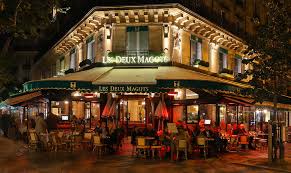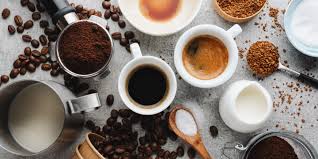The world of coffee has evolved beyond a simple morning pick-me up. Today, artisanal coffee culture celebrates the art of brewing, the craftsmanship of roasting, and the exploration of unique flavor profiles. This vibrant community of coffee enthusiasts is driven by a passion for quality, sustainability, and the stories behind every cup.
If you’re a coffee lover or someone curious about the craft, this guide offers insights into artisanal coffee culture, reviews of premium beans and cafés, and tips for mastering brewing techniques at home.

What Makes Coffee Artistic?
Artisanal coffee focuses on quality, sustainability, and attention to detail throughout the production process. From sourcing beans at fair prices to small-batch roasting and precise brewing techniques, every step is crafted to enhance flavor and experience.
Key features of artisanal coffee include:
- Single-Origin Beans: Coffee sourced from a specific region or farm, offering unique flavor profiles.
- Small-Batch Roasting: Roasted in small quantities to maintain freshness and precision.
- Sustainability: Ethical sourcing practices that support farmers and the environment.
- Focus on Craftsmanship: skilled brewing methods that highlight the coffee’s best characteristics.

Top Artisanal Coffee Beans to Try
1. Ethiopian Yirgacheffe
- Flavor Notes: Floral, citrus, and light-bodied.
- Why It’s Special: Grown in the high altitudes of Ethiopia, this coffee is known for its bright acidity and delicate flavors.
- Best Brewing Method: Pour-over or Chemex to preserve its light and complex notes.
2. Colombian Supremo
- Flavor Notes: Nutty, caramel, and medium-bodied.
- Why It’s Special: Colombian coffee is famous for its balanced profile, making it a crowd favorite.
- Best Brewing Method: French press to highlight its rich, bold flavors.
3. Guatemalan Antigua
- Flavor Notes: Chocolate, spice, and full-bodied.
- Why It’s Special: Grown in volcanic soil, this coffee offers deep, robust flavors with a smooth finish.
- Best Brewing Method: Espresso to capture its bold essence.
4. Costa Rican Tarrazú
- Flavor Notes: Bright, fruity, and well-balanced.
- Why It’s Special: Known for its exceptional quality, Costa Rican coffee is a favorite for those who enjoy vibrant and clean flavors.
- Best Brewing Method: AeroPress for a versatile and crisp cup.

Must-Visit Artistic Cafés Around the World
1. Blue Bottle Coffee (California, USA)
Known for its commitment to freshness, Blue Bottle Coffee roasts its beans within 48 hours of brewing. The minimalist atmosphere and dedication to quality make it a haven for coffee aficionados.
2. Café de L’Ambre (Tokyo, Japan)
A historical café specializing in hand-drip coffee, Café de L’Ambre focuses exclusively on aged beans, offering a truly unique experience for coffee lovers.
3. Stumptown Coffee Roasters (Portland, USA)
A pioneer in the artisanal coffee movement, Stumptown is celebrated for its expertly roasted beans and sustainable practices.
4. Tim Wendelboe (Oslo, Norway)
Run by a World Barista Champion, this café is a temple for coffee lovers seeking perfectly brewed, single-origin coffees.
5. Seven Seeds (Melbourne, Australia)
An icon in Melbourne’s coffee scene, Seven Seeds focuses on small-batch roasting and exceptional flavor clarity.

Brewing Techniques for Artisanal Coffee
1. Pour-Over
- Why It’s Popular: Offers precise control over brewing time and water flow, resulting in a clean, flavorful cup.
- Best Tools: Hario V60, Chemex.
- Tips: Use a gooseneck kettle for even pouring and freshly ground beans for optimal flavor.
2. French Press
- Why It’s Popular: Produces a rich, full-bodied cup by immersing coffee grounds in water.
- Best Tools: Bodum French Press.
- Tips: Let the coffee steep for 4 minutes before pressing for maximum flavor extraction.
3. Espresso
- Why It’s Popular: The foundation of many coffee drinks, espresso delivers intense, concentrated flavors.
- Best Tools: De’Longhi Espresso Machine or a manual lever press.
- Tips: Invest in a good grinder for consistent, fine coffee grounds.
4. Cold Brew
- Why It’s Popular: Offers smooth, low-acidity coffee, perfect for hot weather.
- Best Tools: Mason Jar or Toddy Cold Brew System.
- Tips: Steep coarsely ground coffee in cold water for 12-24 hours.
5. AeroPress
- Why It’s Popular: Versatile and portable, AeroPress allows for a variety of brewing styles.
- Best Tools: AeroPress Coffee Maker.
- Tips: Experiment with water temperature and brew time to find your perfect cup.
How to Join the Artisanal Coffee Movement
- Explore Different Beans: Purchase single-origin beans from reputable roasters to discover your preferred flavor profiles.
- Invest in Quality Equipment: Tools like a burr grinder and scale can elevate your brewing experience.
- Support Local Roasters and Cafés: Discover hidden gems in your area to experience freshly roasted coffee.
- Learn the Craft: Take classes or watch tutorials to master brewing techniques.
The Future of Artisanal Coffee
The artisanal coffee culture is continually evolving, with innovations in sustainable farming, roasting techniques, and brewing methods. As more people prioritize quality and environmental impact, the movement is expected to grow, fostering a deeper appreciation for coffee as an art form.
Conclusion
Artisanal coffee culture is more than a trend—it’s a celebration of craftsmanship, sustainability, and flavor. Whether you’re exploring single-origin beans, visiting world-class cafés, or perfecting your homebrewing technique, the journey offers endless opportunities for discovery.
Take a step into the world of artisanal coffee, and you’ll find that every cup tells a story—one worth savoring









